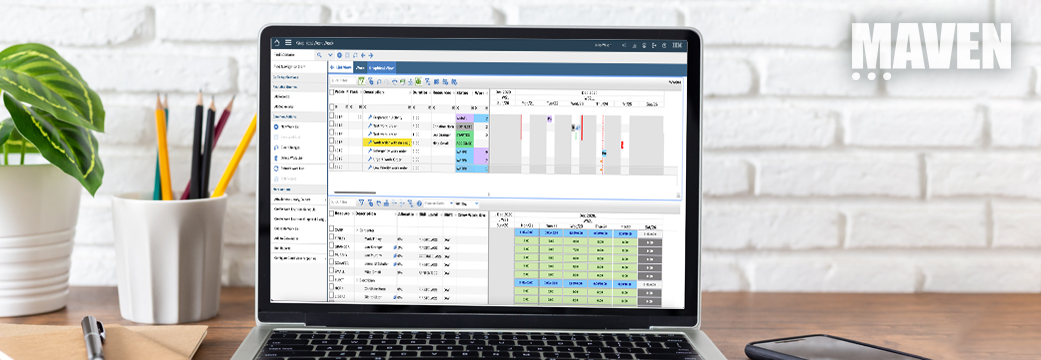Maintenance often supports 24/7 operations with ever-changing, high-demand periods. This can be a difficult working scenario. Add regulations and a high degree of public visibility, and you have the challenge of balancing cost with excellent customer service at its best.
Corrective, or reactive, maintenance practices are often associated with higher costs from greater demands on labor, materials, and management. An ideal set of Preventive Maintenance practices would prevent all equipment failure before it occurs, allowing you to perform repair work when most appropriate and thus, increasing availability and the level of customer service.
In differing situations, there is a place for each. Assuredly, there is a proper balance between these methods which is appropriate for every organization. However, if most of your maintenance is reactive, it’s likely that the organization’s resources are not being used effectively, nor efficiently, and stress levels are running high. If you sense the need to shift the balance more toward preventive efforts, Maximo provides the tools to get you there. Before planning a shift toward the preventive side in your maintenance strategy, you’ll want to take an honest look at where you are.
Where on the Scale is Your Organization?
The gamut of maintenance strategies extends from reactive maintenance with Run-To-Failure (RTF) at one end, and Predictive Maintenance (PdM) at the other, with Preventive Maintenance (PM) practices somewhere in between. The following four sections describe common methods, with RTF as the only purely corrective mode. Since we work in a real world where there is no perfect solution, there is always going to be some corrective RTF work being done, but in what proportion? If you place a percentage of your hours worked on each of the four groups below, it’s fair to say that your RTF should be one of the smaller numbers, and certainly not the largest. Maximo can support any or all of these methods. These can be identified in Maximo work orders by the work type, with Emergency Maintenance (EM) and Corrective Maintenance (CM) as work performed against RTF. Maximo’s Preventive Maintenance (PM) work type is used to tag work performed either as planned, or not as response to a breakdown.
RTF: Run-to-Failure
When maintenance work is most often performed reactively, as corrective responses to breakdowns, crews are busy and rushed. Parts and tools always seem to take a long time to arrive or are shipped overnight at greater cost. With the associated downtime, the customer is not well served. After running this way for an extended period, the entire maintenance department can become numb to requests for high priority work because they’re always just trying to keep up with an ever-growing workload. Some items, however, are well-suited to a RTF strategy. For example, if failure presents a minor inconvenience, replacement cost is low, parts are available, and the work can be performed quickly and easily, RTF might be best. For example, light bulbs that won’t present a safety issue when burned out may fit an RTF methodology. In some organizations with very high service level requirements, lamps are changed out before they reach the end of their anticipated service life. Where you draw the line depends on your organization’s policies and culture.
PM: Scheduled Preventive Maintenance
An organization performing regularly scheduled PMs has an advantage over one who does primarily reactive work. Theoretically, things will run longer when lubricants are replenished and clean, belts and drives are adjusted, and wear items are replaced regularly. Mean Time Between Failures (MTBF) is increased. Crews work in a more controlled and safer environment, and customers are better served. Unfortunately, transitioning from a reactive, or corrective strategy can be difficult for at least two reasons. Leadership may anticipate increased labor costs up front, and it takes time to realize the return. This is certainly an appropriate strategy if your organization can handle the cost in exchange for an improved level of customer service. (Later in this article, we’ll show how to demonstrate your success.) Also, consider that equipment with fairly consistent loading is well supported by scheduled repair or replacement – if there is sufficient data to determine PM cycles. Otherwise, there’s no way to know if you are repairing or rotating out equipment prematurely. As assets have become more complex, and technology ubiquitous, this is greatly improved by automated condition monitoring, which we will discuss shortly.
SI: Scheduled Inspections
Planned equipment inspections supplement a static PM strategy and typically include dedicating regular labor resources working routes on a regular basis. These inspections are performed with the goal of identifying hidden failures that have not yet been discovered or reported. When a failure or non-compliant condition is discovered during an inspection, a corrective action is initiated, such as the manual generation of a work order to perform a repair. For example in the airport environment, 14 CFR Part 139.327 requires daily inspections in many areas. Historically, this method has served high-traffic public facilities well.
PdM: Predictive Maintenance
Collection of equipment condition, known as on-condition inspection or condition monitoring, can be done manually, as part of an inspection strategy. In recent times, much condition monitoring is accomplished automatically. This is sometimes referred to as automated or real-time condition monitoring. This technology-based approach can provide increased performance by helping to identify trends associated with near-term or imminent failure. While there are up-front costs associated with implementation, the ongoing effort to collect condition data is greatly reduced or even eliminated. The information gained is more consistent and of higher quality. This translates to increased service levels and cost control. In the Maximo scope, input from vibration, temperature and electrical current sensors can trigger automated responses that you may pre-define, such as notifications and work order generation. Applying this kind of condition and trend information, whether input is manual or automated, is defined as PdM, or Predictive Maintenance. This is one of the best ways to assure that you are performing PM work at the best possible time.
By now you should have a fair and honest estimate of where your maintenance operation is on the CM-PdM scale, and it’s likely that you have an idea of where the balance should be. Next let’s take a look at how you can leverage Maximo to shift your organization toward that goal.
When assessing Maximo user’s issues in this area, we most often find two reasons for the imbalance toward excessive corrective work.
-
- Noble efforts were once made to set up PMs and routes, but for various reasons, they are no longer effective, or are not being followed.
- PMs and Routes were never put into practice on a large scale.
You’ll need to determine if it’s best to start from scratch, or to attempt to save what PM process you may already have. Generally, it’s faster and less costly to start from a clean slate.
Maximo’s PM application will generate work orders from job plans based on either time or continuous meter based frequency, but they need to be set up with the best information you have. There are several methods for determining PM periods and tasks. They fall into two types which are either through estimates based on recommendations and empirical knowledge (experience), or via automated history data collection. There are many variations on both themes. Let’s take a look some typical methods.
Getting Started – Gather Information
Information can be gathered from equipment makers’ estimates, or even your own educated estimates. Many manufacturers provide life expectancy information for their products. This can be a good starting point, as most reputable suppliers are careful not to overstate reality. In practice, actuals can vary greatly between new and mature equipment, and even by model. Also, too often, recommendations for common wear replacements are biased by a manufacturer’s need to turn their parts inventory. You have seen this in cases where you have a large stock of a particular part that rarely, if ever gets used.
The risks with this method are two-fold. The operating environment, loading, or duty cycle of your equipment may be significantly different than what the manufacturer considers as the norm. Also, your parts inventory may grow as we tend to order liberally, preferring to err on the side of caution. This is, however, a typical and acceptable starting point.
Managing for Continuous Improvement
Managing these risks becomes necessary to balance cost with customer service. Ensure that technicians are entering sufficiently-detailed information when completing work orders, because you’ll need the actual failure category, parts and time used in order to construct a useful history. This is an excellent application for a specialized report that is run and reviewed periodically, highlighting the need for PM adjustments. Remember that not only can PM frequency be optimized, but you can also collect and use information that will help tweak the specific PM tasks. The best practice is one which minimizes the amount of effort required to manage and continually improve the PM process. Be certain to capture all the information you will need by not permitting submission of scantily populated work order information. Use built-in logic, training, or preferably both.
PMs and New Forecasting in Maximo
Maximo’s PM application will generate work orders from job plans based on either frequency (the time you determine by gathering the above information) or continuous meter-based frequency.
Maximo includes PM Forecasting capabilities, which may be used to plan resource requirements without actually creating work orders. You’ll need to be using the PM application to take advantage of this feature, and meter-based PMs require some existing PM history. The effort is worthwhile, as forecasting with this new tool has the potential to both de-stress and improve the planning process significantly.
With Maximo PMs, continuous meter readings can drive PM frequency based on actual usage, which is the next logical step in improving accuracy. You will need to keep up with inputting the readings for PMs to be launched, otherwise, this can backfire and cause PMs to be missed altogether. Fortunately, several options are available to help automate this process.
The Role of Condition Monitoring
Condition Monitoring is a standard feature of core Maximo which is used along with the PM application to bring you squarely into the realm of PdM, or Predictive Maintenance. We say that Maximo’s Condition Monitoring is used along with the PM function because it is intended to supplement it by directly generating inspection or repair work orders as responses to specific targeted conditions. Another way of describing the main difference between Maximo PMs and Condition Monitoring is that properly planned Maximo PMs are aimed at heading off failure types which can be anticipated, while Condition Monitoring will help identify potential unanticipated failures before they occur. The two strategies complement each other; using each one appropriately will result in an optimal balance of cost and service levels.
Documenting and Demonstrating the Positive Shift
Winston Churchill was quoted as saying, “However beautiful the strategy, you should occasionally look at the results.” Of course, that’s a valid statement in the world of maintenance management. Earlier, we suggested a report for helping with the interpretation of work order findings, for use in determining and improving PM frequencies. Additional reports will serve your effort to shift from a corrective centric to preventive or predictive balance as well. Consider that a report which demonstrates the shift over time, perhaps month by month, will demonstrate the success of your efforts. Perhaps a simple report displaying the ratios between your EM/CM and PM work types is all you’ll need. You will likely think of other reporting options which will both help show progress and manage your change along the way.
Next Steps
It doesn’t take a seasoned manager to realize that too much corrective work is being done. People are stressed, schedules are difficult to maintain, planning is followed by cycles of re-planning, and there’s a lot of justification and excuse-making to go around. If you sense any of these effects in your maintenance work environment, putting in the effort to make the shift is a necessity.
It does, however, take good tools and a fair amount of expertise to make the change – to shift the balance away from a heavily-reactive workload. Maximo has the built-in functionality and Maven has the expertise to help you get to that ultimate balance of lower cost and excellent service. Whether you need help getting a project started, or require the reports to be created to demonstrate your progress and success, we’re glad to support your shift away from corrective maintenance toward a balance with greater PM and PdM.
Links to Additional Material:







